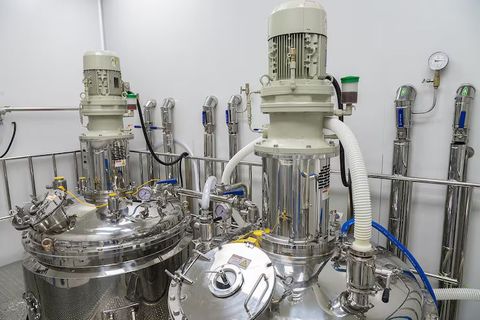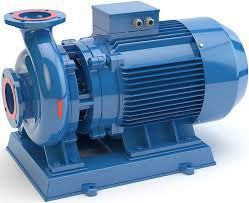Direct Digital Synthesis Overview: Explore Key Concepts, Basics, and Essential Knowledge
Direct Digital Synthesis (DDS) is a method used to generate precise waveforms using digital techniques rather than purely analog designs. It was created to address the limitations of traditional signal-generation methods, which depended on mechanical tuning, analog oscillators, or fixed-frequency circuits. As electronics advanced, engineers required a waveform generation approach that offered higher accuracy, fast tuning speed, and long-term stability. DDS provides these characteristics by using digital logic, numerical control, and advanced algorithms to construct signals with predictable performance.
A typical DDS system includes four core components: a frequency tuning word, a phase accumulator, a lookup table, and a digital-to-analog converter (DAC). These parts work together to synthesize signals such as sine waves, square waves, and custom modulation patterns. Because the output is digitally controlled, engineers can update or modify the waveform through software rather than changing hardware components. This makes DDS suitable for modern communication devices, scientific instruments, and embedded technologies.
Today, DDS is widely used across electronics, aerospace, industrial automation, broadcasting, and test instrumentation. Its digital architecture provides precision, flexibility, and repeatability—qualities essential in environments where stable and programmable signal generation is required.
Importance
DDS is significant because it supports applications that demand highly stable frequency generation, low phase noise, and rapid frequency adjustments. Its importance continues to grow as more industries adopt digital systems that require precise signal control.
Several groups benefit from DDS technology:
-
Communication engineers designing radios, wireless networks, and satellite systems.
-
Instrumentation developers working on oscilloscopes, analyzers, and calibration tools.
-
Industrial automation specialists controlling synchronized motors, sensors, and feedback loops.
-
Researchers and students analyzing frequency behavior, digital waveform generation, and signal processing fundamentals.
DDS addresses multiple challenges found in traditional analog solutions:
-
Frequency accuracy: Digital tuning ensures minimal drift compared to analog oscillators.
-
Fast updates: DDS can switch frequencies almost instantly, helping applications that need agile modulation.
-
Programmability: Users can control the system through software, making it easy to generate complex or custom waveforms.
-
Stability: Digital methods are more resistant to temperature changes and aging effects.
These benefits make DDS valuable in modern engineering environments, where precision and versatility are essential for achieving consistent performance.
Recent Updates
Technology surrounding DDS continues to evolve, supported by advancements in digital processing, faster DACs, and improved semiconductor design. Recent developments over the past year highlight how DDS is becoming even more efficient and reliable.
Higher-speed DAC integration (2024–2025):
Manufacturers have introduced DAC components with higher sampling rates, enabling cleaner signals and wider output bandwidths. These improvements support advanced communication systems where efficiency and signal clarity are essential.
Lower power DDS chips (2024):
Embedded system designers have focused on ultra-low-power DDS components to support battery-powered devices and portable instruments. Unlike older units, modern DDS chips operate at significantly reduced power levels while maintaining accuracy.
Improved phase noise performance (2024–2025):
Phase noise reduction continues to be a priority in RF system design. New DDS architectures use optimized phase accumulators and better clock management techniques to reduce unwanted spectral components.
Enhanced digital control interfaces:
In 2025, updates to microcontroller platforms and FPGA-based control modules have simplified the integration of DDS into mixed-signal systems. Developers now have access to more reliable libraries, reference designs, and open-source tools for waveform synthesis control.
These updates reflect a trend toward more efficient, flexible, and computationally powerful DDS-based systems.
Laws or Policies
Regulations related to DDS technology mainly involve how generated signals interact with communication networks, electromagnetic environments, and national frequency allocations. While DDS itself is not regulated as a device category, the signals it generates must comply with relevant standards in each region.
Common regulatory considerations include:
-
Electromagnetic interference guidelines: DDS-based equipment must follow national EMC rules to prevent unintentional interference with radio communication services.
-
Frequency allocation policies: Government authorities assign specific frequency bands for public, industrial, scientific, and communication uses. Any DDS system used in a transmitter must operate within assigned limits.
-
Safety and conformity standards: Many countries align with international standards for electrical and electronic equipment. These guidelines ensure safe operation, proper shielding, and predictable system performance.
For laboratory use, research, and internal industrial systems, DDS equipment typically operates within closed environments where compliance focuses on safe operation and minimal interference. For communication devices, adherence to national frequency rules is essential to maintain orderly use of the electromagnetic spectrum.
Tools and Resources
Various tools, software environments, and reference materials support learning, testing, and implementing DDS systems. These resources help engineers understand tuning parameters, waveform behavior, and system performance.
Common tools include:
-
Waveform visualization software
Helps analyze output signals generated by DDS modules. -
FPGA development platforms
Useful for building custom DDS architectures using programmable logic. -
Microcontroller libraries
Assist in controlling tuning words, phase increments, and output waveforms through firmware. -
Digital signal processing calculators
Help compute phase resolution, frequency accuracy, sampling rates, and output spectrum characteristics. -
Test and measurement tools
Such as frequency counters and spectrum analyzers for validating DDS-generated signals.
Below is an example of a simple reference table that illustrates typical DDS parameters and their meaning.
| Parameter | Description |
|---|---|
| Frequency Tuning Word | Sets output frequency relative to the system clock |
| Phase Accumulator | Determines waveform progression step by step |
| DAC Resolution | Defines output signal precision |
| Lookup Table Size | Influences waveform detail and accuracy |
| System Clock | Affects maximum output frequency and signal purity |
These resources make DDS technology approachable for both beginners and experienced professionals working with complex signal environments.
FAQs
What is Direct Digital Synthesis used for?
DDS is used to generate stable and programmable waveforms in communication systems, test equipment, industrial controls, and digital electronics. It provides precise frequency control and fast tuning capabilities.
How is DDS different from analog oscillators?
Analog oscillators rely on components such as inductors and capacitors, which can drift due to temperature or aging. DDS uses digital logic, producing waveforms with higher stability, accuracy, and software-controlled flexibility.
What determines the accuracy of a DDS system?
Accuracy depends on the system clock, phase accumulator width, DAC resolution, and lookup table quality. Higher resolution and faster sampling typically lead to improved signal purity.
Can DDS generate multiple waveform types?
Yes. DDS can produce sine waves, square waves, triangle waves, chirp signals, and custom digital patterns using lookup tables or numerically controlled algorithms.
Is DDS suitable for high-frequency applications?
DDS can support high-frequency environments depending on the sampling rate and DAC performance. Recent updates in 2024–2025 have improved output bandwidth and reduced phase noise for advanced RF systems.
Conclusion
Direct Digital Synthesis is a core technology in modern signal generation, providing precise, stable, and programmable waveforms across a wide range of industries. Its digital foundation allows rapid tuning, predictable behavior, and adaptable waveform design. Recent improvements in DAC performance, power efficiency, and digital control continue to enhance DDS capabilities, making it an increasingly important tool for engineers and researchers. As digital systems advance, DDS will remain a foundational method for generating accurate and reliable signals in communication, instrumentation, industrial automation, and educational environments.





